How to improve acoustics, depending
on the type of space?
Everyday sounds like conversations, phones ringing, footsteps, equipment noise, and outside sounds (such as traffic or construction) cause noise pollution in workplaces. This can lead to issues like lack of privacy and echo problems. To improve focus, productivity, and reduce stress, proper acoustic design and treatment are essential. Good noise control also boosts employee performance and engagement.
FeltVibe® offers a wide range of solutions for these needs, with ceiling, wall, and divider options to suit different workspace layouts.
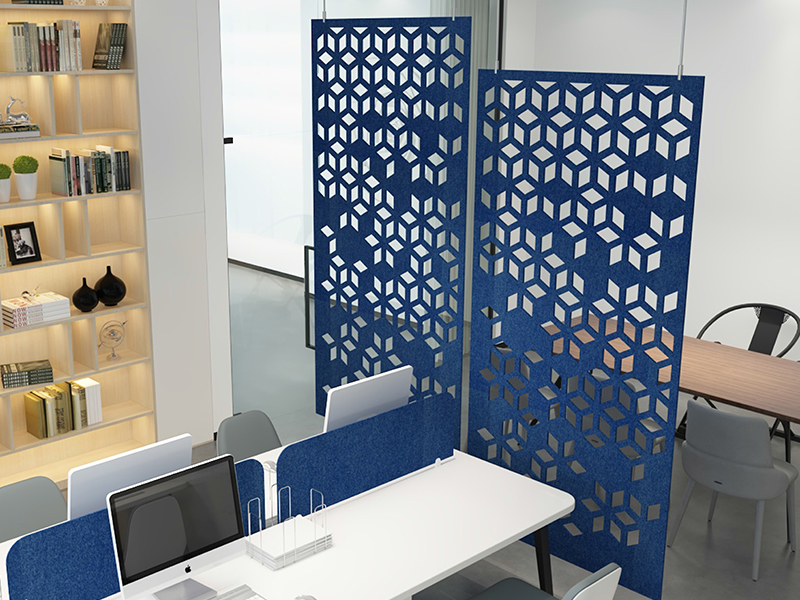
Open-Plan Workspaces
In open-plan offices, wall surfaces are limited and far from work areas, making them hard to treat acoustically. The most effective solutions are suspended acoustic panels above desks or acoustic totems placed nearby. Spaces can also be divided to create more privacy. These partitions not only make the area more private but also add color and shape, making the workspace feel more dynamic and welcoming.
Offices
These smaller spaces cause soundwaves to quickly bounce between walls, creating a “ping pong” effect known as floating echoes. To fix this, acoustic panels should be used on the walls to absorb sound, along with ceiling panels to address noise from above.
High foot traffic can also cause walls to wear out quickly. To solve both problems, it’s best to use acoustic wall coverings and install suspended panels above meeting tables, placing them close to where people are seated.
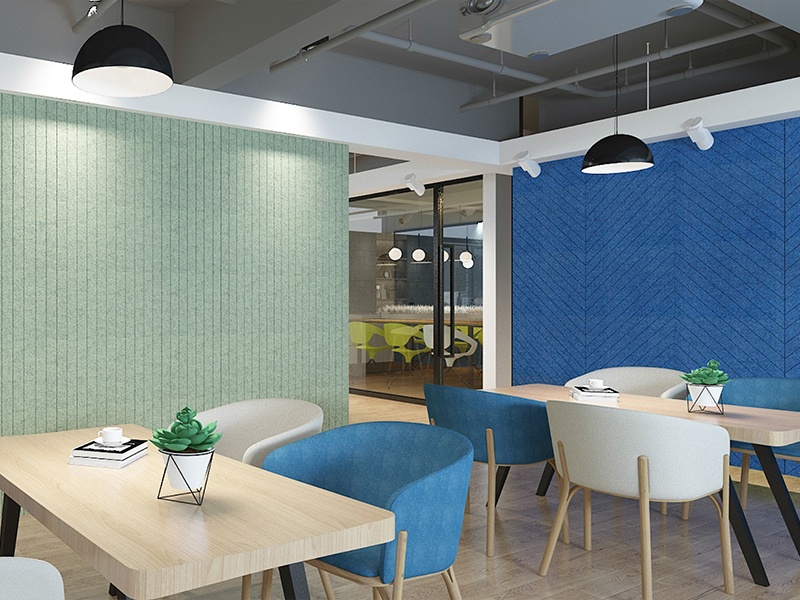
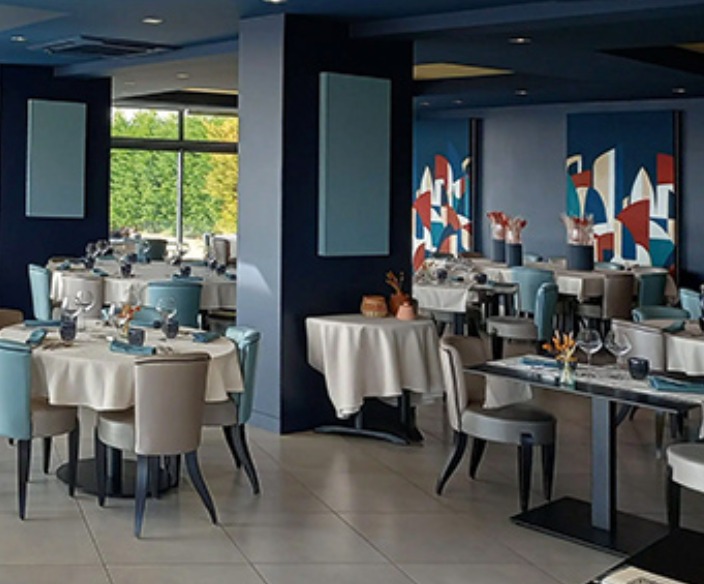
Restaurants
Noises from equipment (kitchens, cutlery) and conversations that are responsible for the acoustic discomfort. When the acoustics are not addressed, customers need to be louder to be understood, amplifying the sound volume and the unpleasant impression of a permanent cacophony, making the pace uncomfortable and tiring.
This is the “Lombard” effect, commonly called the “cocktail effect”. Acoustic wallcoverings will correct high frequencies but will also limit the premature wear and tear on the walls and decorate the space. For optimal acoustic comfort, they should be combined with acoustic panels to treat the sound source above the tables and correct the medium and low frequencies of conversations.
Communal Areas
Noise from equipment (like kitchens and cutlery) and conversations often cause acoustic discomfort. When not managed, people speak louder to be heard, increasing overall noise and creating a tiring, chaotic atmosphere. This is known as the “Lombard effect” or “cocktail effect.” Acoustic wallcoverings help absorb highfrequency sounds, protect walls from wear, and add decorative value. For the best results, they should be combined with ceiling panels above tables to absorb mid and lowfrequency sounds from conversations.
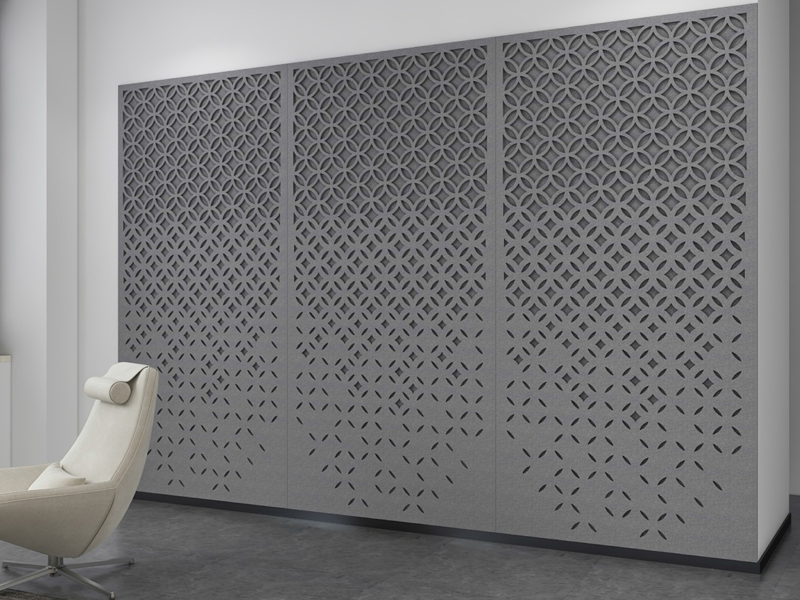
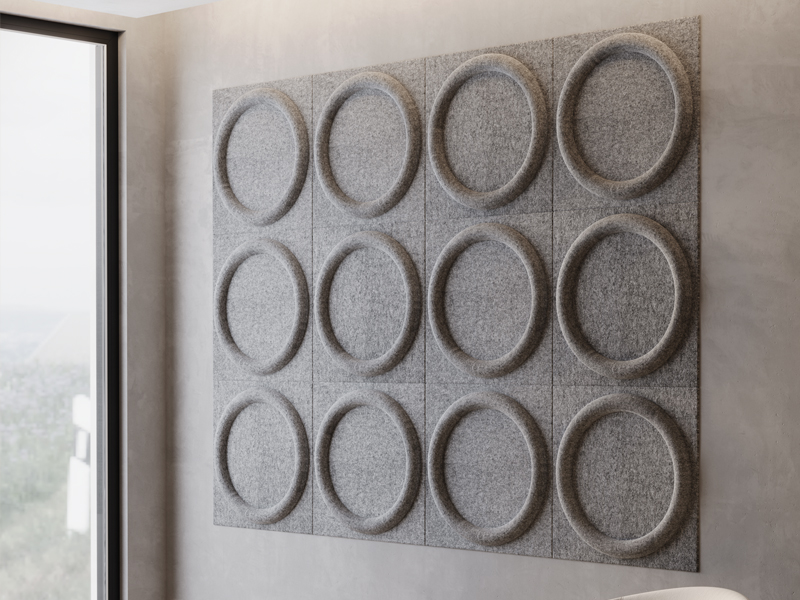
Co-Working or Seminar Areas
As in meeting rooms, customer traffic can cause walls to wear out quickly, along with issues related to poor sound absorption. To improve acoustics, it’s recommended to use acoustic wallcoverings and suspended panels above work tables, placing them close to users. In larger spaces, wall-mounted macoustic panels can also be used to treat sound more effectively.
Education & Classrooms
Schools and other public buildings should be designed to reduce indoor noise. This includes sound insulation from outside and between rooms, as well as limiting noise from building equipment. Ceilings should be treated with acoustic panels, and there are several options available. Wall panels can also help improve speech clarity. In amphitheaters or large rooms with wide wall surfaces, durable acoustic wallcoverings are useful for absorbing high-frequency sounds and protecting walls from damage. Noise from equipment and conversations affects acoustic comfort.
Acoustic wallcoverings help absorb high frequencies, reduce wall wear, and enhance the room’s appearance. For best results, they should be combined with ceiling panels near sound sources to absorb mid and low-frequency sounds from speech.
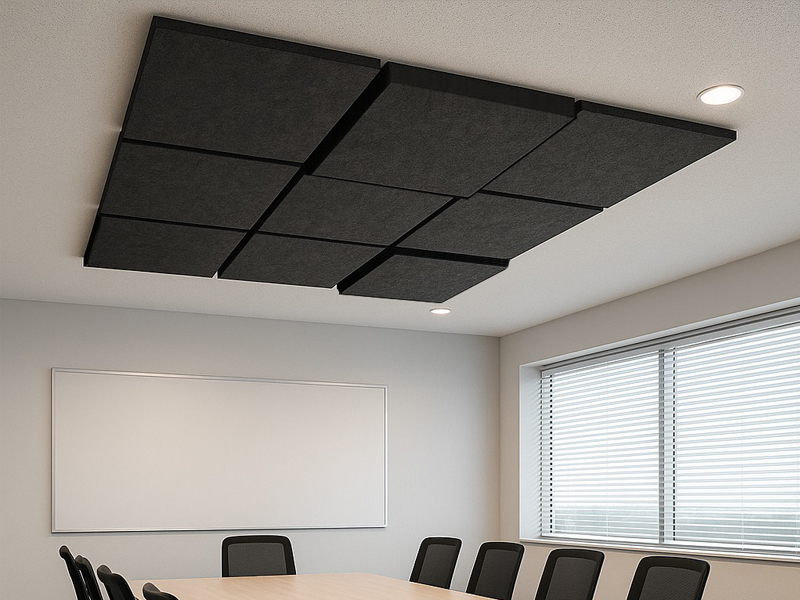
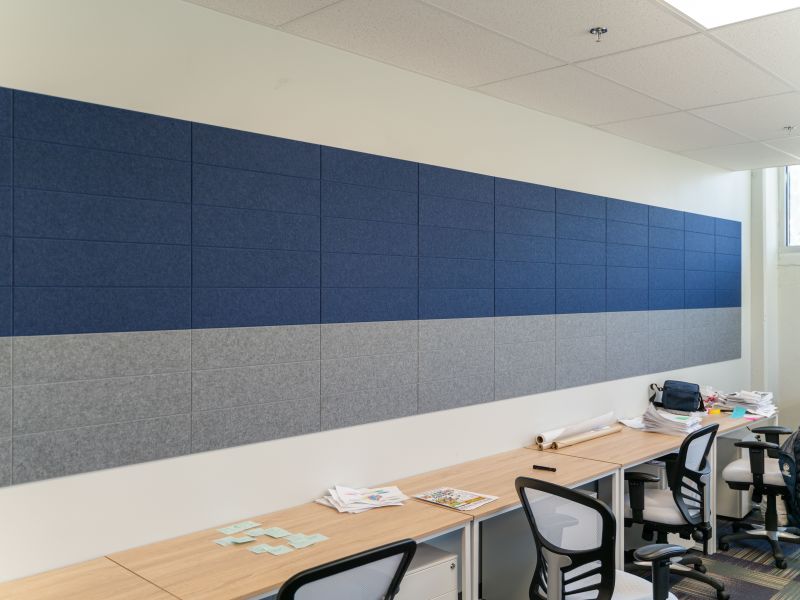
Multi-Function Rooms
These are spaces where students gather for cultural events, sports activities, or celebrations. They are usually large and made of hard, echo-prone materials, which increase reverberation time (Tr). To reduce noise pollution, suspended acoustic panels are an effective solution.
They help control sound levels and improve the room’s usability by managing noise and echoes.
Bars & Restaurants
Today, three main factors matter: food, service, and the overall sound and atmosphere. As noise exposure grows, good acoustic comfort is key to customer satisfaction. Like hotel restaurants, noise from equipment (kitchens, cutlery) and conversations cause discomfort. When acoustics are poor, people speak louder to be heard, raising noise levels and creating a tiring, chaotic environment. This is called the “Lombard effect” or “cocktail effect.”
Acoustic wallcoverings absorb highfrequency sounds, protect walls from wear, and decorate the space. For best results, they should be combined with ceiling panels above tables to absorb mid and low-frequency sounds from conversations. Ceiling-mounted panels work best because they absorb sound from all sides, especially in rooms with tiled or glass walls.

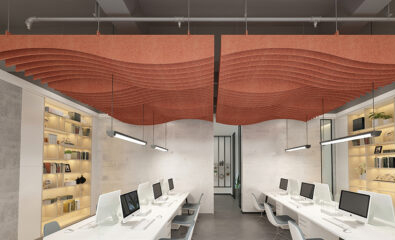
Function and Entertainment Areas
In large function rooms, the main acoustic challenge is managing both constant background noise and sudden loud sounds like banging. The goal isn’t to eliminate all noise but to stop sounds from endlessly echoing between walls.
At the same time, people should be able to hear each other clearly without shouting. The aim is to create real acoustic comfort for both participants and the audience.